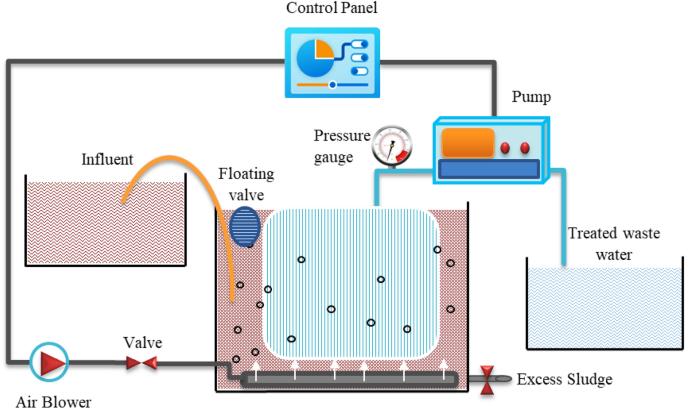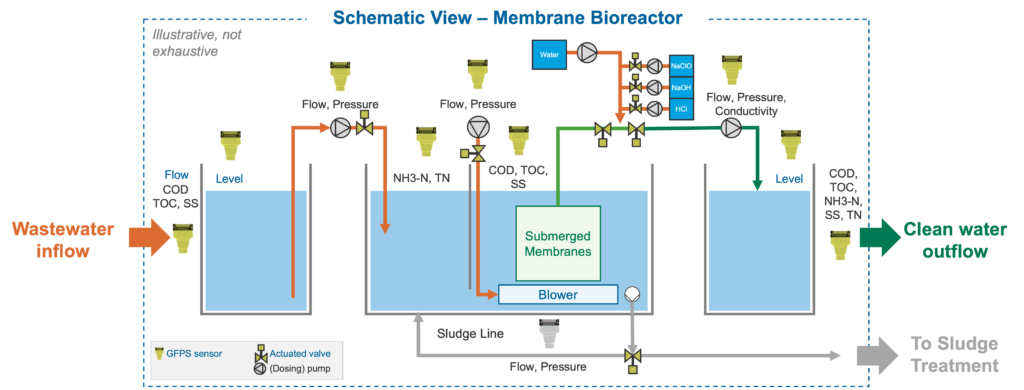Future Trends in Membrane Bioreactor Technology and Its Global Impact
Future Trends in Membrane Bioreactor Technology and Its Global Impact
Blog Article
Membrane Layer Bioreactors Discussed: Effective Solutions for Clean Water
Membrane layer bioreactors (MBRs) have actually arised as a sophisticated solution for addressing the pushing challenges of wastewater therapy. By integrating organic procedures with innovative membrane layer filtration, MBRs not only enhance the high quality of cured water however additionally minimize the spatial needs of treatment facilities. As ecological worries magnify, the function of MBR innovation in promoting sustainable water administration comes to be progressively considerable. Nevertheless, the intricacies of their procedure, advantages, and prospective applications warrant a closer examination to fully understand their effect on the future of water treatment.

What Are Membrane Layer Bioreactors?
Membrane bioreactors (MBRs) are sophisticated wastewater therapy systems that integrate organic degradation processes with membrane purification modern technology. This integration enables the effective removal of impurities from water, making MBRs a favored choice in numerous applications, consisting of local wastewater therapy and industrial effluent monitoring.

Among the vital advantages of MBRs is their capacity to generate high-quality effluent, often appropriate for reuse in watering or industrial procedures. Additionally, MBRs require a smaller footprint contrasted to conventional therapy systems, making them perfect for metropolitan setups where room might be restricted.
Additionally, MBRs can effectively take care of varying influent tons and are much less at risk to the impacts of toxic shocks. These features contribute to their expanding popularity as a sustainable solution for addressing the raising need for tidy water while minimizing environmental influences.
Just How Membrane Bioreactors Work
While the operation of membrane bioreactors (MBRs) might seem complicated, it essentially focuses on the harmony in between organic processes and membrane filtration. MBRs incorporate an organic therapy process, usually triggered sludge, with a membrane layer splitting up device to treat wastewater effectively.
In an MBR system, wastewater is first introduced right into a bioreactor where microorganisms degrade organic matter and various other contaminants. The biological task decreases the focus of pollutants while advertising the growth of biomass. Following this organic treatment, the blended alcohol goes through membrane layer filtration, which can be microfiltration or ultrafiltration, relying on the desired effluent quality.
The membrane layers serve as a physical barrier, allowing water and little solutes to pass while retaining suspended solids and larger particles. This makes it possible for the system to keep a high concentration of biomass within the activator, enhancing the therapy efficiency.
Moreover, the constant separation of cured water from the biomass helps with a small style and decreases the impact of the therapy facility. On the whole, the combination of biological degradation and membrane filtration in MBRs causes efficient and trustworthy wastewater treatment, ensuring top quality effluent ideal for numerous applications.
Benefits of MBR Technology
Among the key advantages of membrane bioreactor (MBR) modern technology is its capacity to produce premium effluent with a dramatically reduced impact contrasted to conventional wastewater treatment methods. MBR systems efficiently combine biological treatment and membrane purification, causing remarkable removal of pollutants, consisting of put on hold solids, pathogens, and organic matter. This ability causes effluent that often fulfills or exceeds rigid regulative criteria for reuse and discharge.
In addition, MBR innovation enables higher biomass concentrations, which boosts the treatment performance and decreases the needed reactor quantity. This portable style is specifically beneficial in metropolitan locations where area is limited. The operational versatility of MBR systems additionally implies they can adjust to differing influent qualities and flow rates, click to read more making them ideal their website for a vast array of applications.
Furthermore, the minimized sludge manufacturing related to MBR procedures adds to reduce functional and upkeep costs. The membranes work as a physical barrier, lessening the risk of blocking and allowing longer operational periods between cleansing. In general, the advantages of MBR technology make it an eye-catching remedy for sustainable wastewater therapy, resolving both ecological issues and the need for effective source management.
Applications of Membrane Bioreactors
With their adaptability and effectiveness, membrane bioreactors (MBRs) find applications across numerous sectors, consisting of municipal wastewater treatment, commercial processes, and also water recovery. In local settings, MBRs give a small solution for dealing with wastewater, properly getting rid of impurities while concurrently generating top notch effluent that fulfills rigorous regulatory standards. This makes them specifically suitable for locations with minimal area.
In commercial applications, MBR modern technology is used for treating process water, especially in sectors such as food and drink, drugs, and petrochemicals. These industries take advantage of MBRs' capability to handle high organic lots and their performance in recovering valuable sources from wastewater, such as nutrients and water.
Additionally, MBRs play a vital role in water recovery efforts, allowing the reuse of treated wastewater for irrigation, commercial processes, or perhaps as drinkable water after further therapy (Membrane Bioreactor). Their efficiency in getting rid of contaminants and virus makes them a trusted selection for guaranteeing water top quality in different reuse applications
Future of Water Therapy Solutions
The future of water treatment remedies is poised for transformative innovations driven by technological technology and enhancing ecological awareness. As worldwide water shortage ends up being a pushing issue, new techniques, including membrane bioreactor (MBR) systems, are established to play a critical function in enhancing the effectiveness and sustainability of water therapy processes.
Arising modern technologies such as synthetic intelligence and artificial intelligence are expected to maximize treatment procedures, enabling for real-time surveillance and anticipating maintenance. This will improve the total reliability and effectiveness of water therapy centers. Innovations in membrane products, such as graphene and nanofiltration, guarantee to raise permeation prices and reduce fouling, leading to reduced energy consumption and operational costs.
Furthermore, the combination of renewable resource resources right into water treatment plants will add to greener techniques. The round economic climate model will additionally get grip, urging the recovery of valuable sources from wastewater, such as nutrients and energy.
Final Thought

Membrane bioreactors (MBRs) have actually emerged as an advanced option for resolving the pushing challenges of wastewater therapy. By incorporating organic procedures with official website advanced membrane layer purification, MBRs not just improve the quality of cured water yet likewise lower the spatial needs of therapy facilities.One of the vital advantages of membrane bioreactor (MBR) innovation is its capacity to produce top quality effluent with a considerably decreased impact contrasted to standard wastewater treatment methods.With their flexibility and efficiency, membrane layer bioreactors (MBRs) discover applications across different fields, consisting of metropolitan wastewater treatment, commercial processes, and even water reclamation.In verdict, membrane bioreactors stand for a significant development in wastewater treatment modern technology, integrating biological procedures with effective membrane filtering to generate high-quality effluent.
Report this page